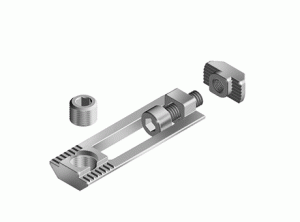
Connectors come in a variety of styles, one of which is milling. Milling connectors are used to join multiple parts of pieces — just like all connectors. However, they feature a unique design that distinguishes them from all other styles of connectors. For a better understanding of milling connectors and how they work, keep reading.
Overview of Milling Connectors?
Milling connectors are mechanical connectors that are designed to connect two pieces at a 90-degree angle. They are typically used in conjunction with pieces of extrusion, such as extruded plastic.
Rather than drilling holes into the pieces of extrusion and connecting them with traditional fasteners, you can join them with a set of milling connectors. The milling connectors will fit into the ends of the extrusion pieces, allowing you to join them at a 90-degree angle without the need for traditional fasteners.
How Milling Connectors Work
Milling connectors work by providing two separate connection points: one for each of the two pieces of extrusion. Pieces of extrusion, of course, often feature uniform grooves known as “T-slots.” You can slide a set of milling connectors into the T-slot grooves of two extrusion pieces. The milling connectors will then hold the extrusion pieces together.
The Benefits of Milling Connectors
Why should you choose milling connectors exactly? They don’t require machining. Rather than machining the pieces, you can connect them with a set of milling connectors. Milling connectors are easy to use, as they don’t require any machining.
There’s no faster way to connect pieces of extrusion than by using milling connectors. You can slide them into the pieces’ T-slot grooves, thereby securing the pieces together.
You can find milling connectors in different sizes. Some of them are short, whereas others are long. Regardless of the extrusion pieces with which you intend to use them, there are probably milling connectors out there for the job.
Milling connectors help maintain consistent production quality. This is particularly important for businesses that mass-produce products. Milling connectors will promote consistent quality in all of the products.
Another benefit of milling connectors is concealment. You typically won’t be able to see a milling connector after installing it. Since they are designed for use in the T-slot grooves of extrusion pieces, they are hidden.
In Conclusion
When connecting pieces of extrusion, you may want to use milling connectors. They are mechanical connectors that allow for 90-degree connections with pieces of extrusion.
